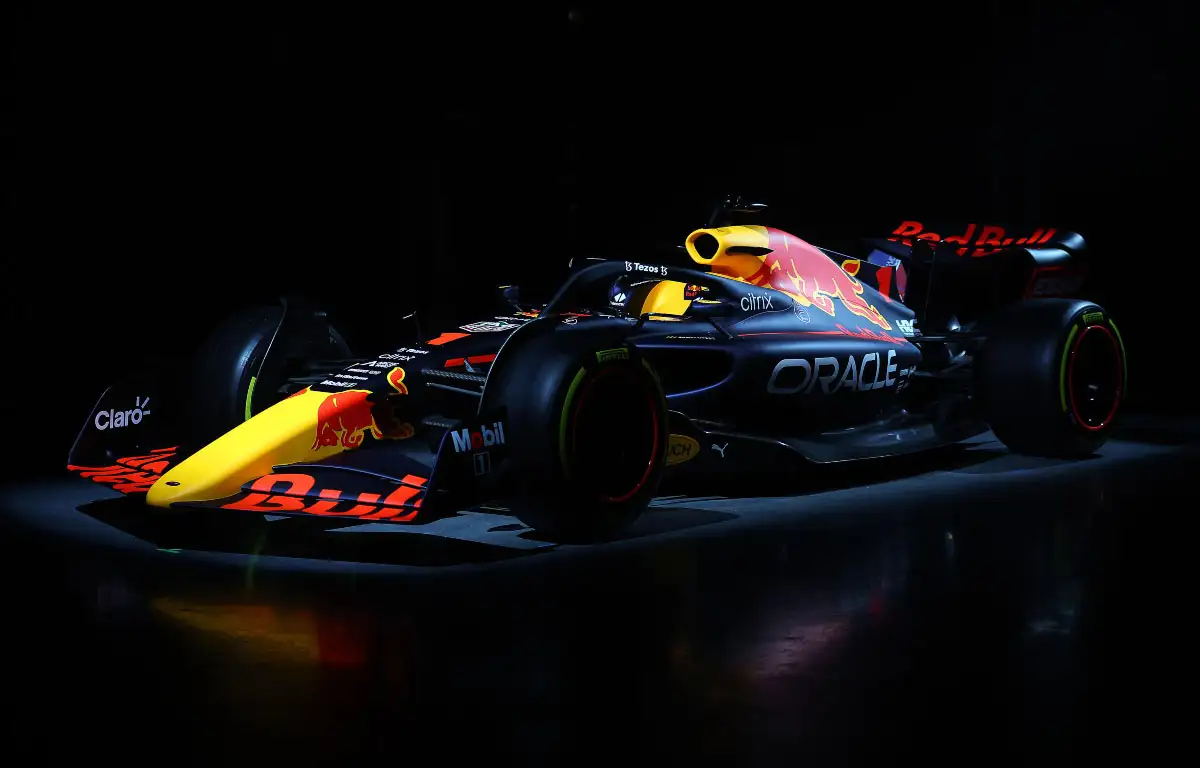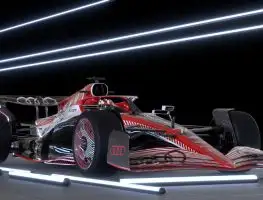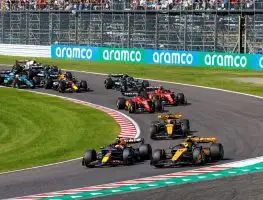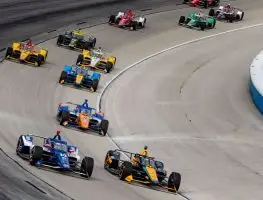Why F1 must help spruce up unfulfilling car launches

The Red Bull RB18 is unveiled to the world. February 2022.
When does a reluctance to reveal secrets stray into the territory of taking fans for fools? It is a question Formula 1 must confront after a strangely unfulfilling start to its new era this week.
The regulation changes for 2022 are widely regarded as the most significant in a generation – though some may recall the same being said of those of 2009, 2014 and 2017 – and, as the result of years of intense research, come with the promise of revolutionising the racing.
Simplified aerodynamic surfaces, ground effect and 18-inch wheels, complete with covers and winglets, are just some of the changes intended to increase overtaking opportunities.
And after the highly anticipated new rules, originally intended to be introduced last year, were delayed by 12 months due to the pandemic, you might think we have waited long enough to see the new cars in all their glory.
But some teams, it seems, are determined to keep us waiting a little longer yet, revealing cars they openly admit bear little resemblance to the real thing.
First out of the block wereHaas, whose digital renders of the new VF-22 released on February 4 carried striking similarities to the shiny concept car unveiled by Formula 1 at Silverstone last July.

Was this early evidence that the new rules are so restrictive, denying designers the scope to find interesting and innovative solutions, that one size fits all?
Not quite, acknowledged technical director Simone Resta and team principal Guenther Steiner, who immediately teased the Haas – the images of which were based on a primitive stage of development –will look somewhat differentwhen it takes to the track for pre-season testing.
Then, on Wednesday came Red Bull, who launched the RB18, Adrian Newey’s latest creation and the car they hope will allow Max Verstappen to defend his World Championship.
Except they didn’t, instead uncovering a contraption that according to renowned F1 technical expert Craig Scarborough was not even legal, with no brakes, no wheel covers, no suspension springs or dampers – and no shame either.
“Because it’s new regulations, it’s going to evolve very, very quickly,” team principal Christian Horner explained, apparently with a straight face. “I think by the time we get to the first race, the car’s not going to look very much like this.”
It was left to Aston Martin to be the first to unveil a genuine design on Thursday and they were applauded for doing so – and were quickly followed by McLaren on Friday – but it has come to something when teams are being commended for bringing the real cars to car launches.
At this stage it would be more accurate to refer to these events as ‘team launches’ – unashamedly self-congratulatory party conferences where new personnel are formally welcomed, new partners are officially announced and the aims and ambitions for the coming season are outlined.
All too often these days the car itself – as was the case at the Red Bull launch, where the team’s title sponsorship arrangement with Oracle quickly became the main theme of the online presentation – is reduced from centrepiece to unsatisfactory hybrid billboard.
It is, of course, the prerogative of the teams to present their cars in whichever way they choose, though surely it cannot be a coincidence that the last truly inspiring, classic launch came 15 years ago with the unveiling of the McLaren MP4-22 in Valencia.
Liberty have identified this as a problem area in the past, with German publication Auto Motor und Sport reporting that their proposal for a joint-launch event involving all 10 teams in 2019 was rejected – hardly surprising, with teams being rightly fearful of their design details being exposed.
But with F1’s owners making a significant breakthrough in terms of technical transparency this year it is perhaps high time to try again.
One of the various sporting rule changes for 2022 will see both Friday practice sessions held later in the day, effectively cutting race weekends from four days to three.
That will leave mornings free for media duties, which according to Ross Brawn will include show-and-tell sessions in which teams will be invited to elaborate on car updates for each race before declaring them to the FIA, presumably in much the same way powertrain components for each car are currently published.
It remains to be seen how it will work in practice and, in truth, whether people will be particularly interested when the human elements of a Formula 1 season – the controversies, the rivalries and the accompanying wars of words – take precedence over the machines.
A 2022#F1car! On a track!pic.twitter.com/KFE6JMEv26
— PlanetF1 (@Planet_F1)February 11, 2022
Certainly it is difficult to imagine Resta attracting much of a crowd to detail how Haas plan to score points in Canada in the angry aftermath of Verstappen andLewis Hamiltoncoming to blows in Baku.
If successful, however, the concept could contribute to breaking the walls teams have constructed around themselves for far too long in a sport in which nothing, with team photographers patrolling the pitlane, ever stays secret for very long anyway.
The irony of the RB18 non-event is that last month Red Bull’s own Hangar-7 facility hosted the season launch of the World Rally Championship, where the egos and suspicious minds of designers were left at the door as the new cars of Toyota, Hyundai and Ford were formally unveiled within metres of each other.
With all three revealed within 20 minutes of the hour-long presentation, drivers happily poking at the cars of their rivals, the WRC launch was a reminder of what is achievable when self-interest is secondary to the greater good and there is no reason why a similar format could not be adopted by Formula 1.
Could the weekend before the first pre-season test, for instance, be dedicated to unveiling the cars – five on Saturday, five on Sunday – in a walk along the Barcelona pitlane broadcast live on YouTube?
A joint launch might, for starters, put an end to the ‘no, after you’ behaviour of teams turning up late for testing and the cameras could maintain a respectful distance while showing the cars – the actual cars – in their natural habitat.
The time-limited nature of a multi-team presentation would also encourage teams to concentrate on the essentials – car, drivers, tech and team bosses – without falling into the superfluous elements of modern launches.
The marketing trivialities of the Oracle Red Bull announcement and Lawrence Stroll’s Aston Martin monologue, making half-hour presentations feel twice as long? Save it for the press releases. Just show us the car, please.
The film of Lando Norris and Daniel Ricciardo recording a song back in 2021? The fan questions asking Sebastian Vettel for the thousandth time what he’d be if he wasn’t a racing driver? Save it for social media, where those who want to see can go looking for it. Just show us the car.
The golden days of F1 car launches, with Spice Girls concerts, DHL deliveries and trips to Venice and Moscow’s Red Square, were about showcasing Formula 1 in the most extravagant and ethereal light, selling a world most could barely comprehend – but these fantasy lands never extended to the cars themselves.
Beneath the lavishness of the launches, there was at the core a layer of authenticity represented by the real car, this race-ready symbol of a team’s hopes and dreams, which would go on to win or lose, deliver or disappoint.
When people can’t believe what they see, the sport has a problem.
And if the teams themselves can no longer be trusted to launch cars correctly and without causing deliberate confusion, it is time for Formula 1 to take it out of their hands once and for all.






